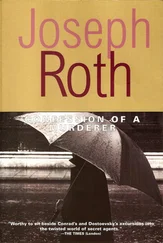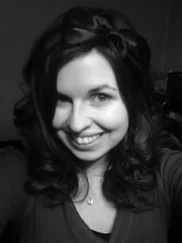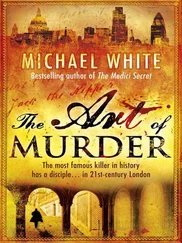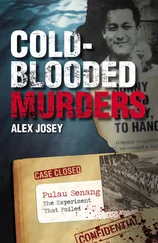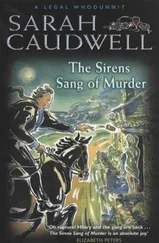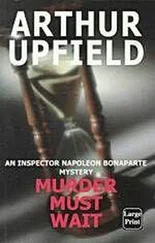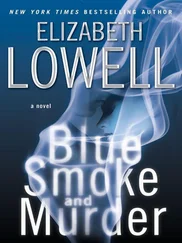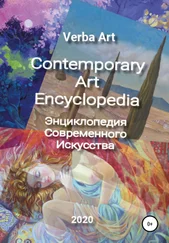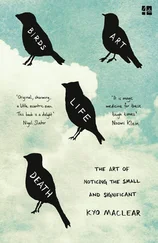Jose Somoza - Art of Murder
Здесь есть возможность читать онлайн «Jose Somoza - Art of Murder» весь текст электронной книги совершенно бесплатно (целиком полную версию без сокращений). В некоторых случаях можно слушать аудио, скачать через торрент в формате fb2 и присутствует краткое содержание. Жанр: Триллер, на английском языке. Описание произведения, (предисловие) а так же отзывы посетителей доступны на портале библиотеки ЛибКат.
- Название:Art of Murder
- Автор:
- Жанр:
- Год:неизвестен
- ISBN:нет данных
- Рейтинг книги:4 / 5. Голосов: 1
-
Избранное:Добавить в избранное
- Отзывы:
-
Ваша оценка:
- 80
- 1
- 2
- 3
- 4
- 5
Art of Murder: краткое содержание, описание и аннотация
Предлагаем к чтению аннотацию, описание, краткое содержание или предисловие (зависит от того, что написал сам автор книги «Art of Murder»). Если вы не нашли необходимую информацию о книге — напишите в комментариях, мы постараемся отыскать её.
Art of Murder — читать онлайн бесплатно полную книгу (весь текст) целиком
Ниже представлен текст книги, разбитый по страницам. Система сохранения места последней прочитанной страницы, позволяет с удобством читать онлайн бесплатно книгу «Art of Murder», без необходимости каждый раз заново искать на чём Вы остановились. Поставьте закладку, и сможете в любой момент перейти на страницу, на которой закончили чтение.
Интервал:
Закладка:
He was sitting inside one of the two Portakabins taken over by Security. There were six trucks on either side of the Tunnel, parked in places that allowed them free access to the recovery and rescue vehicles. Each pair of these trucks was occupied by a different department: Art, Conservation and Security. They had set up closed-circuit TV monitors in the Portakabins to supervise the parts of the Tunnel where works were being exhibited, as well as the entrance, exit and the central square where the paintings were to be picked up. Portakabin A covered the first six works in the first arm of the horseshoe. Portakabin B was in charge of the other seven; it was parked near the Van Gogh museum, and this was the one Bosch was seated in.
The cameras trained on the Museumplein showed a spectacle that would doubtless have Paul Benoit rubbing his hands with delight, thought Bosch. There was still an hour and a half to go to the opening, and the line of shiny umbrellas already reached round the Rijksmuseum and as far as the Singelgracht. Some people had been waiting in the same place since dawn or the previous night, standing in front of the first security barrier, ticket in hand. The police had set up a barricade all along Museumstraat and Paulus Potterstraat to prevent trouble. Despite this – and once again, to Benoit's delight – there was trouble in both places: members of BAH and other groups opposed to HD art were waving banners and shouting slogans against the Foundation. Adjacent to the Tunnel, in the area occupied by the television crews, several presenters were unfurling their microphones.
In violent contrast, the Tunnel monitors were filming in silence. Some works had already been installed, but in the case of others like Christ the process had not yet been completed. Bosch watched the play of light and shade as Gustavo Onfretti was crucified. They had spent more than four hours attaching him to the rectangles of painted wood by means of something like transparent hoops. Onfretti had to stay in the exact position Van Tysch had painted, which was very demanding. By comparison, the 'descent' would be easy. Flashes from his near-naked body glinted on the TV screens as it was caught in the torch beams.
'Who would want to spend six hours a day like that?' commented Ronald, who was watching the Christ monitor. Ronald was overweight and at times like these stuffed himself with doughnuts. An open box of them lay near his screen, and he was busy bidng into one. Part of the sugar frosting had fallen on to his red card. Sitting in front of The Feast of Belshazzar monitor, Nikki smiled. it's modern art, Ronald. We don't understand it.'
'But this is meant to be classical art,' protested Osterbrock, the man looking after Danae, as he pressed various switches in the seat opposite Bosch. 'After all, they're Rembrandt paintings, aren't they?'
The Portakabin's narrow central aisle was full of Foundation personnel coming and going. Bosch could not help observing them. He looked at all of them, those he had known for some time and those he did not know at all; at Nikki, Martin, Ronald the doughnut-eater, at Michelsen, at Osterbrock. He studied their smiles, their routine gestures, their voices. All of them had been through identity checks before they joined the team, but Bosch watched them as though he were watching a shadow moving in the midst of motionless shadows. Then he turned to look again at the monitor showing the front of the long queue outside. 'Where are you? Where are you?'
That same morning Europol had received a description of Postumo Baldi. Bosch had sent it to them through the proper channels, to some extent using members of Rip van Winkle. Soon afterwards, he had begun to get information.
The Naples police did not know of his whereabouts. Those in Vienna and Munich had not found any trace or sample of body fluid or hairs at the scenes of the crime which compared with their data. All the clues they had found were from disguises or artificial substances. There was not a single organic residue, only plastic and cerublastyne. As though the Artist were a doll. Or perhaps a canvas. Europol was going on with its tireless search on computers all over the world. They were looking for clues that might link Baldi to some place or event. They were checking hospitals and cemeteries, reports of minor offences, crimes committed by others, unsolved cases. The Missing Persons Bureau had tracked him from Naples to Van Obber and Jenny Thoureau, from the house he was born in (since demolished) and his parents – mother's current whereabouts unknown – to the last hotels he had stayed in during 2004. But that was where all tracks ended. At the end of that year Baldi had abandoned his job as a portrait in the house of Mademoiselle Thoureau without explanation, and from that moment on, the earth had swallowed him up. A lot of people thought he must be dead.
In spite of the air conditioning which filled the interior of the Portakabin with a throbbing, unending supply of cool air, Bosch could feel the sweat coursing down his back. Postumo could be one of the faces he was looking at. Baldi could be any of them, he was infinitely interchangeable. In himself he was nothing more than the air a knife slices through as it strikes its blow: invisible, but vital. His eyes were mirrors. His body, fresh clay.
The Young Girl Leaning on a Windowsill seemed to be staring back at him from her distant pedestal shown on monitor number nine. It was his niece Danielle whom Van Tysch had chosen to recreate that particular Rembrandt painting. The chiaroscuro lighting had not yet been switched on, so Danielle did not stand out from the darkness of the Tunnel. Bosch could not even see her face. There he is,' someone said behind his back, startling him.
The speaker was Osterbrock. He was pointing to the monitor that showed the people entering the Tunnel from Museumstraat. A dark stretch limousine was gliding towards the entrance. Its image disappeared as it passed through the first police barrier.
'It's Van Tysch,' said Nikki. 'He's come to give the finishing touches to the paintings.' 'And to switch on the chiaroscuro,' added Osterbrock.
Bosch wondered where Miss Wood might be. Why on earth had she decided to leave all of a sudden? Did she want to keep well out of the way?
He did not think that was the reason. He trusted her. He could not trust anyone else.
He wished the exhibition was already over. Or at least that this day (this interminable day when the hours dragged by as though drenched in oil) would end as soon as possible.
26.45.
Clara wished the day would never end.
She was crouching by the side of a pond of still waters, surrounded by trees and shadowy scenery. Everything smelled of paint, everything was rigid. This was the background to Susanna Surprised by the Elders. Clara was completely naked, painted in dense tones of rose, ochre and cadmium red, with streaks of deep mahogany. Her face was reflected in a mirror placed in the base of the plinth, invisible to the public. This was all she could see clearly, but even though she could not see them, she could sense the presence of the Elders behind her back, petrified, monstrous chimeras, mountains tilting towards her body, cliffs of oil paint.
She had just been put into place and had still not reached quiescence. Time passed like the people flowing round her (technicians and workmen, security agents): something that went by without touching her. Yet she could tell that the exhibition had not yet opened because the chiaroscuro lighting had not been switched on.
At a certain moment, a silhouette moved out of the public gangway, leapt over the security rope, and walked towards the plinth. Behind it came an entourage of legs. Something important was going on. Two dark shoes came to a halt beside her colour-stiffened thighs. She heard again that distant, grave voice, the fluent Spanish like a tolling bell. 'Keep looking at yourself in the mirror.' It was like an electric shock. She obeyed, of course.
Читать дальшеИнтервал:
Закладка:
Похожие книги на «Art of Murder»
Представляем Вашему вниманию похожие книги на «Art of Murder» списком для выбора. Мы отобрали схожую по названию и смыслу литературу в надежде предоставить читателям больше вариантов отыскать новые, интересные, ещё непрочитанные произведения.
Обсуждение, отзывы о книге «Art of Murder» и просто собственные мнения читателей. Оставьте ваши комментарии, напишите, что Вы думаете о произведении, его смысле или главных героях. Укажите что конкретно понравилось, а что нет, и почему Вы так считаете.

